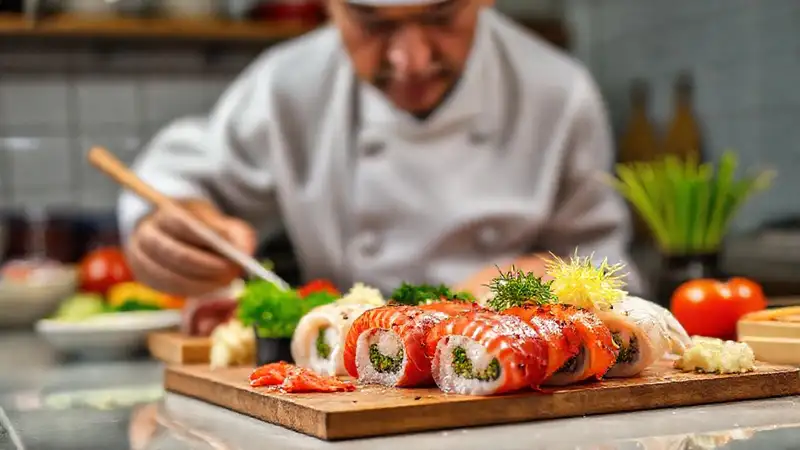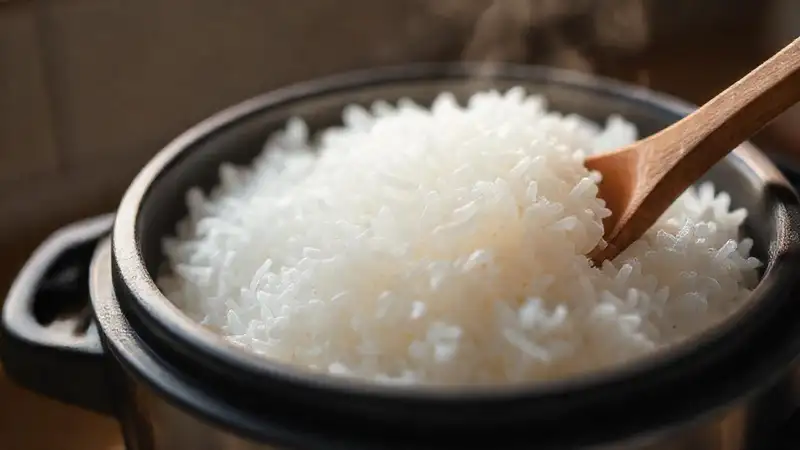Persian cuisine is renowned globally for its fragrant and incredibly flavorful dishes. At the heart of many of these meals lies rice, and not just any rice – it’s a painstakingly prepared staple that significantly contributes to the overall experience. Iranian rice preparation is a complex art form, steeped in tradition and demanding a specific technique. This careful attention to detail ensures a textural and gustatory perfection that elevates the entire meal. Understanding the nuances of rice cooking, particularly the seemingly simple act of steaming, unlocks the secrets to achieving that characteristic, light and fluffy texture that defines Persian rice.
This article will delve into the specific techniques used to prepare three exceptionally popular Persian rice dishes: Tahdig, Firini, and Khoresht. We will explore the individual methods and the crucial steps involved in creating each, paying particular attention to the processes that contribute to Firini rice's extraordinary lightness. From precise water ratios to careful steaming times, we'll uncover the secrets behind this iconic rice variety and how it manages to retain its coveted fluffiness.
The Secrets of Tahdig Formation
Tahdig, the deeply browned and incredibly crispy crust that forms at the bottom of the pot, is arguably the most prized part of a Persian rice dish. It’s a testament to patience and proper technique. Achieving a perfect tahdig requires careful consideration of several factors. Firstly, the rice must be sufficiently dry – excess water is the enemy. Using a good quality, long-grain rice is also essential, as it retains its shape better during the high-heat cooking process.
The layering technique is paramount. Traditionally, a thin layer of oil is poured into the bottom of the pot, creating a barrier that prevents the rice from sticking. Then, a second layer of rice is spread evenly over the oil. This second layer is often lightly sprinkled with saffron threads and butter – both crucial components for flavor and color. Finally, the pot is covered tightly and the rice is cooked over high heat.
The rapid evaporation of moisture during the initial cooking stage is what creates the ideal conditions for tahdig formation. This intense heat caramelizes the rice, resulting in that signature deep golden-brown, intensely flavorful crust. It’s a delicate balance, demanding a watchful eye and a willingness to persevere.
Understanding Firini Rice: A Delicate Technique
Firini rice is famed throughout Iran for its incredibly light and airy texture. It’s a testament to a specialized steaming method, differentiating it significantly from the more common methods used for other rice varieties. The preparation of Firini rice requires a specially designed pot, often made of copper or stainless steel, which aids in even heat distribution and prevents sticking. Crucially, it’s about achieving a specific level of steam.
The method centers on layering the rice and water, often using a double layer of rice, with a small amount of water between each layer. This initial steaming helps to hydrate the rice grains without fully cooking them. The pot is then tightly covered and allowed to steam for an extended period, often 45-60 minutes. This prolonged steaming is what creates the characteristic fluffiness.
Furthermore, Firini rice is often cooked with a small amount of saffron, which not only imparts its signature yellow hue but also contributes to the rice's delicate aroma and flavor. Maintaining a consistent heat source and avoiding opening the lid during steaming are critical to prevent the steam from escaping and hindering the formation of the light and airy texture.
The Role of Water Ratio in Persian Rice

The water ratio is undeniably one of the most critical factors determining the texture of Persian rice. It’s not simply a matter of adding water to the rice; rather, it’s about achieving a specific hydration level. Generally, a higher water ratio produces stickier rice, while a lower ratio results in drier rice. For Firini rice, the water ratio is significantly lower than for other varieties.
Traditionally, a ratio of approximately 1.5 to 2 parts water to 1 part rice is employed, but this can vary depending on the type of rice and the desired texture. The water must be very hot when added to the rice – this helps to evenly hydrate the grains and prevent the rice from scorching on the bottom of the pot. Using filtered water is also recommended, as chlorine can affect the flavor and texture of the rice.
A small amount of salt is typically added to the water, which helps to control the rice’s expansion and contributes to its flavor. However, it’s important not to over-salt, as it can negatively impact the taste of the final dish. Mastering the water ratio is a key element in achieving the perfect texture, no matter the specific rice variety being cooked.
Khoresht Rice: Infusion and Slow Cooking
Khoresht is a Persian rice dish served with a savory stew, often lamb, chicken, or vegetables. The rice itself is cooked alongside the stew, absorbing its rich flavors and aromas – making it a truly immersive culinary experience. The rice is typically long-grain and is cooked in a slow-simmering stew, often with the addition of broth and spices.
The method of cooking differs slightly from simply boiling rice. The stew is brought to a gentle simmer, and the rice is added, ensuring that it is fully submerged. The pot is then tightly covered and allowed to cook slowly for an extended period, typically 30-45 minutes. This slow cooking process allows the rice to absorb the flavors of the stew without becoming mushy.
The spices used in the stew are crucial to the overall flavor profile of the dish. Common spices include saffron, turmeric, cumin, and cinnamon, which add warmth and complexity to the rice. The long cooking time also helps to soften the rice grains, contributing to their texture and making them easier to eat.
Conclusion
In conclusion, the seemingly simple act of preparing Persian rice is, in fact, a carefully honed culinary tradition. From the meticulous layering and steaming techniques employed in Firini rice to the slow infusion of flavors in Khoresht, each method is designed to achieve a specific textural outcome. Understanding these nuances – the importance of dryness, the precise use of water, and the controlled steaming process – are key to unlocking the secrets of this beloved staple.
Ultimately, Persian rice is more than just a side dish; it’s an integral part of the culture and a reflection of the dedication and skill of the cooks who prepare it. By mastering these techniques, you can truly appreciate the beauty and deliciousness of this cornerstone of Iranian cuisine and replicate that prized fluffy texture at home.
 How does cultural exchange influence West African cuisine
How does cultural exchange influence West African cuisine Describe the process of making cassava fufu correctly
Describe the process of making cassava fufu correctly How does food preparation reflect cultural values
How does food preparation reflect cultural values How does Firini rice represent Persian hospitality
How does Firini rice represent Persian hospitality How to achieve perfectly fluffy rice for Biryani
How to achieve perfectly fluffy rice for Biryani What’s the traditional method for achieving a rich Dal Makhani
What’s the traditional method for achieving a rich Dal Makhani How do you replicate authentic Japanese sushi flavors
How do you replicate authentic Japanese sushi flavors
Deja una respuesta